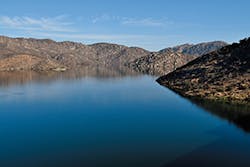Interest in water reuse has picked up momentum in the past several years, especially in the areas where drought has become a long-lasting issue (think California and Texas) or where environmental regulations are forcing changes (think Florida).
Brown and Caldwell is a water reuse leader who works with water agencies nationally. But Wendy Broley, in Brown and Caldwell’s San Diego, CA, office, admits most of her work is centered in California. Ninety percent of water reuse occurs in California, Arizona, Texas, and Florida, she says. While water scarcity is the primary driver in the first three states, the driving forces in Florida are sensitive environmental conditions and policy requirements.
Interest in water reuse has picked up momentum in the past several years, especially in the areas where drought has become a long-lasting issue (think California and Texas) or where environmental regulations are forcing changes (think Florida). Brown and Caldwell is a water reuse leader who works with water agencies nationally. But Wendy Broley, in Brown and Caldwell’s San Diego, CA, office, admits most of her work is centered in California. Ninety percent of water reuse occurs in California, Arizona, Texas, and Florida, she says. While water scarcity is the primary driver in the first three states, the driving forces in Florida are sensitive environmental conditions and policy requirements. [text_ad] Broley observes that water agencies throughout the west are thinking about indirect and direct potable reuse, providing Brown and Caldwell strong business opportunities, even though specifications are only at the thought stage. Broley says, “We can no longer afford to manage our water supplies in silos. We can’t close the water cycle if we’re not reaching across groups.” The WateReuse Association reports that across the country 19 agencies are planning or have constructed indirect potable reuse facilities. Another five are planning, constructing, or operating direct potable reuse facilities. Two of the five are profiled here, along with two indirect potable reuse facilities. There is a difference between the two technologies. Indirect potable reused or reclaimed water is treated to a level matching purified water, then injected into groundwater or surface spreading reservoirs. After a period of time, it is piped to water treatment plants along with raw water and into the drinking water system. Direct potable reuse on the other hand, after following relatively identical treatment, skips the environmental buffer created by the reservoir and is piped directly to the water treatment plant where it is treated again with raw water and distributed as drinking water.Broley observes that water agencies throughout the west are thinking about indirect and direct potable reuse, providing Brown and Caldwell strong business opportunities, even though specifications are only at the thought stage. Broley says, “We can no longer afford to manage our water supplies in silos. We can’t close the water cycle if we’re not reaching across groups.”
The WateReuse Association reports that across the country 19 agencies are planning or have constructed indirect potable reuse facilities. Another five are planning, constructing, or operating direct potable reuse facilities. Two of the five are profiled here, along with two indirect potable reuse facilities.
There is a difference between the two technologies. Indirect potable reused or reclaimed water is treated to a level matching purified water, then injected into groundwater or surface spreading reservoirs. After a period of time, it is piped to water treatment plants along with raw water and into the drinking water system.
Direct potable reuse on the other hand, after following relatively identical treatment, skips the environmental buffer created by the reservoir and is piped directly to the water treatment plant where it is treated again with raw water and distributed as drinking water.
Public acceptance of direct potable reuse, the holy grail of water reuse, is still the worry of agencies working it. At the town hall plenary session featuring industry and agency representatives held during the WateReuse–California Conference in March in Los Angeles, the consensus was that the technology is well developed but that public acceptance still needs work.
Felicia Marcus, chairwoman of the State Water Resources Control Board, says, “Demographic shifts will make direct potable reuse more acceptable, easier, and less of a yuck factor because [the young] accept technology.”
On the other hand, Daniel Nix, the utility operations manager with the Wichita Falls, Texas Public Works Department, also speaking at the plenary session, says, “We truly believed we would have difficulty with public acceptance” with their new direct potable reuse facility which adds 500 gallons/day to the water supply. However, “the media sold the public on the project, including print, TV, and radio that all ran positive stories on the drought, conservation, and reuse. We couldn’t have done this without the media,” he says. The plant has been operating since July 2014.
The Orange County Water District (OCWD) in California built a groundwater replenishment system in 2008 and brought an expansion online in June. This system has become an inspiration and model for water districts struggling with diminishing water supplies. Managers interviewed for the four projects highlighted here cited the OCWD’s successful experience with indirect potable reuse as the reason for moving their projects ahead.
